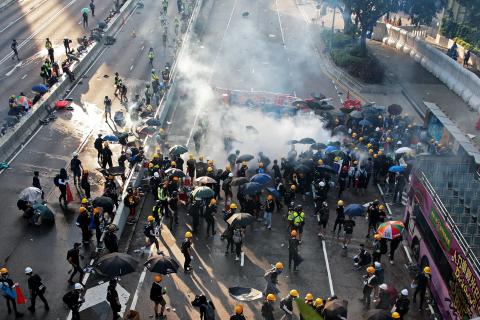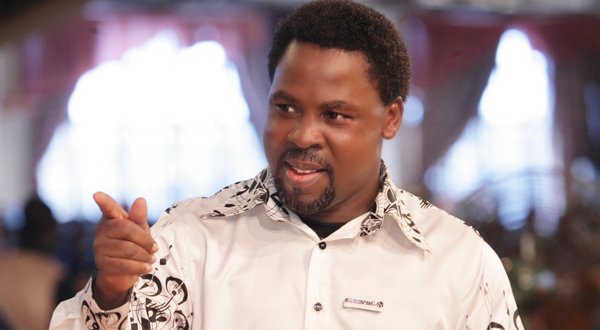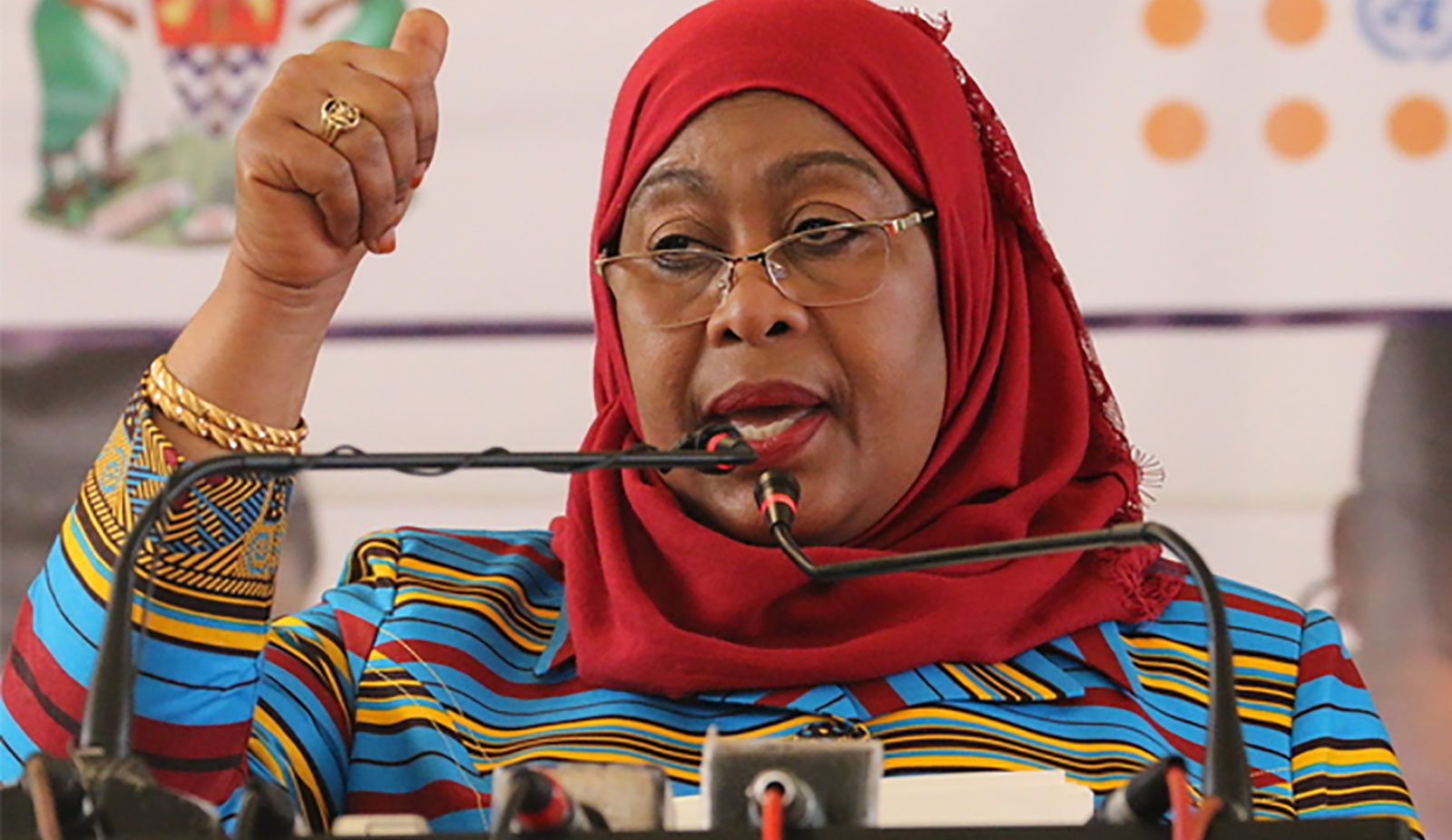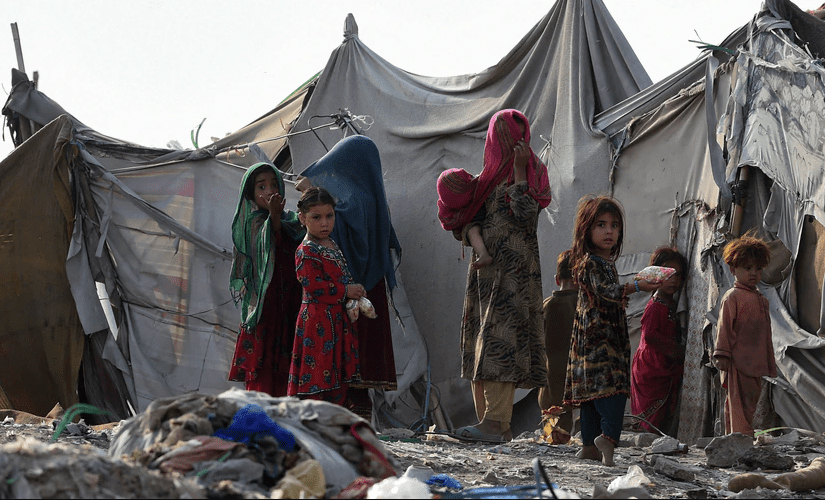Hong Kong police fired tear gas and rubber bullets in fresh clashes with protesters after a general strike caused transport chaos on Monday, and as night fell in the Asian financial hub thousands of activists blocked roads in several districts.
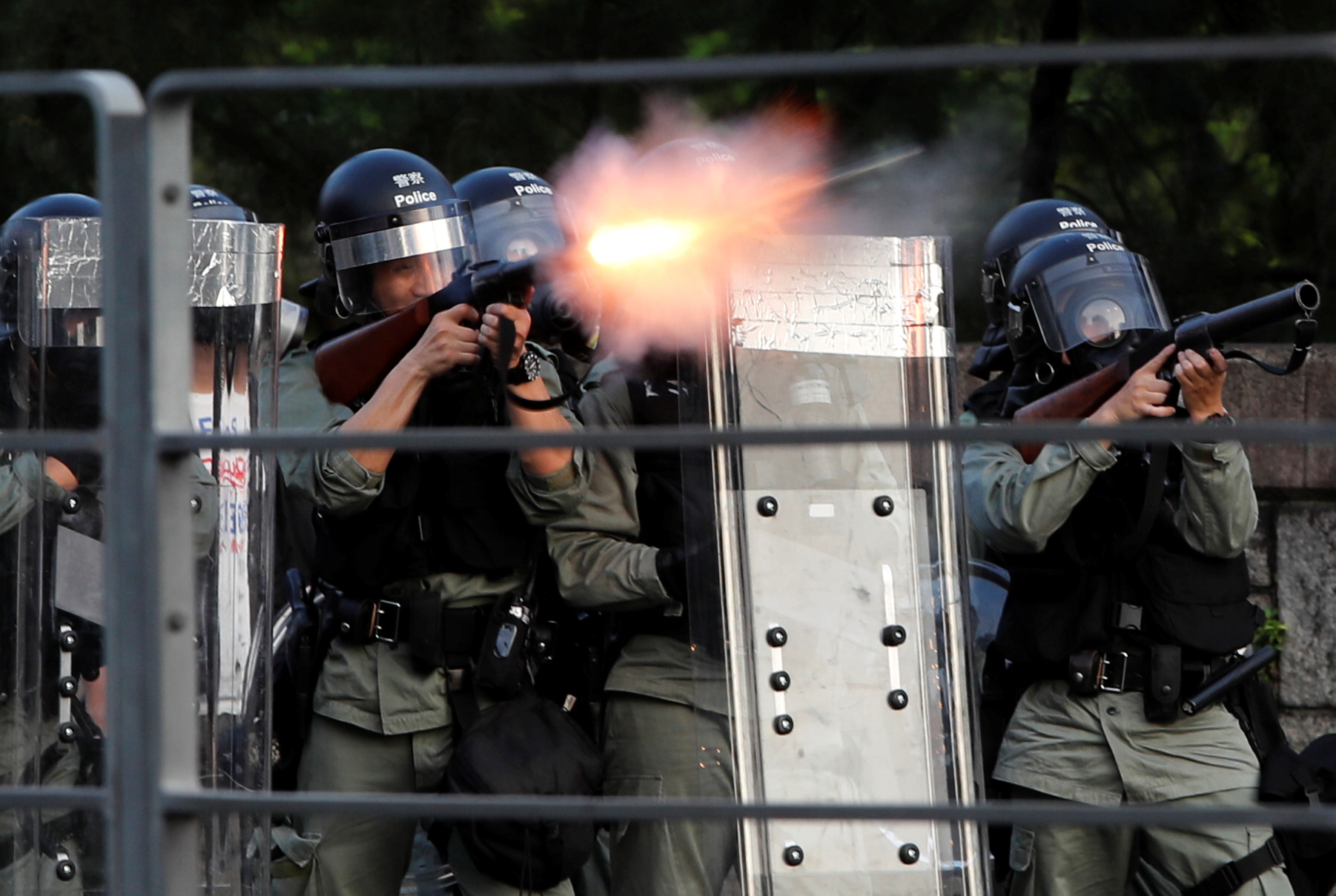
The latest protests surpassed all the earlier shows of dissent for scale and intensity, escalating after Hong Kong’s Beijing-backed leader warned that the city is on the verge of an “extremely dangerous situation” and represented a challenge to China’s sovereignty.
What started several months ago as demonstrations over an extradition bill that would have allowed people to be sent to mainland China for trial have now evolved into a much broader backlash against the city’s government and its political masters in Beijing.
As some train and bus services resumed, tens of thousands of demonstrators fanned out across several districts, and there were running battles with riot police as some activists besieged police stations.
Thousands of black-clad protesters later occupied roads in Admiralty district near government buildings for several hours before moving to other areas. By nightfall, protests continued across the city.
Earlier, speaking to the media for the first time in two weeks, Beijing-backed leader Carrie Lam remained defiant as she rejected calls from protesters demanding her resignation, saying the government would be resolute in maintaining law and order.
She warned that the protests were putting the former British colony on a path of no return and had hurt its economy.
“They claim they want a revolution and to restore Hong Kong. These actions have far exceeded their original political demands,” said a stern-faced Lam, flanked by senior members of her administration.
China’s Hong Kong and Macao Affairs Office of the State Council said it would hold a press conference on Tuesday at 2.30 pm (0630 GMT) to discuss the situation in the city.
The protests pose the greatest political challenge to the government of the former British colony since it returned to Chinese rule and represent the biggest popular challenge to Chinese leader Xi Jinping since he came to power in 2012.
“These illegal acts that challenge our country’s sovereignty, and jeopardize ‘one country two systems’, will destroy the stability and prosperity of Hong Kong,” Lam said, referring to the territory’s administrative system since 1997, when it was handed back to China.
Some demonstrators accused Lam of again fuelling the crisis by ignoring public sentiment, however, and pledged to continue their movement.
It was “totally a waste of time” to hear her speak, said Jay Leung, 20, a university student.
“I don’t think the government is doing anything to heal society,” he added. “They provide no solution to solve the political problem brought on by themselves.”
Russell, 38, who works in the tourism industry said, “Nothing, she said nothing. I didn’t hear anything positive, she just made it worse.”
Source: Reuters

